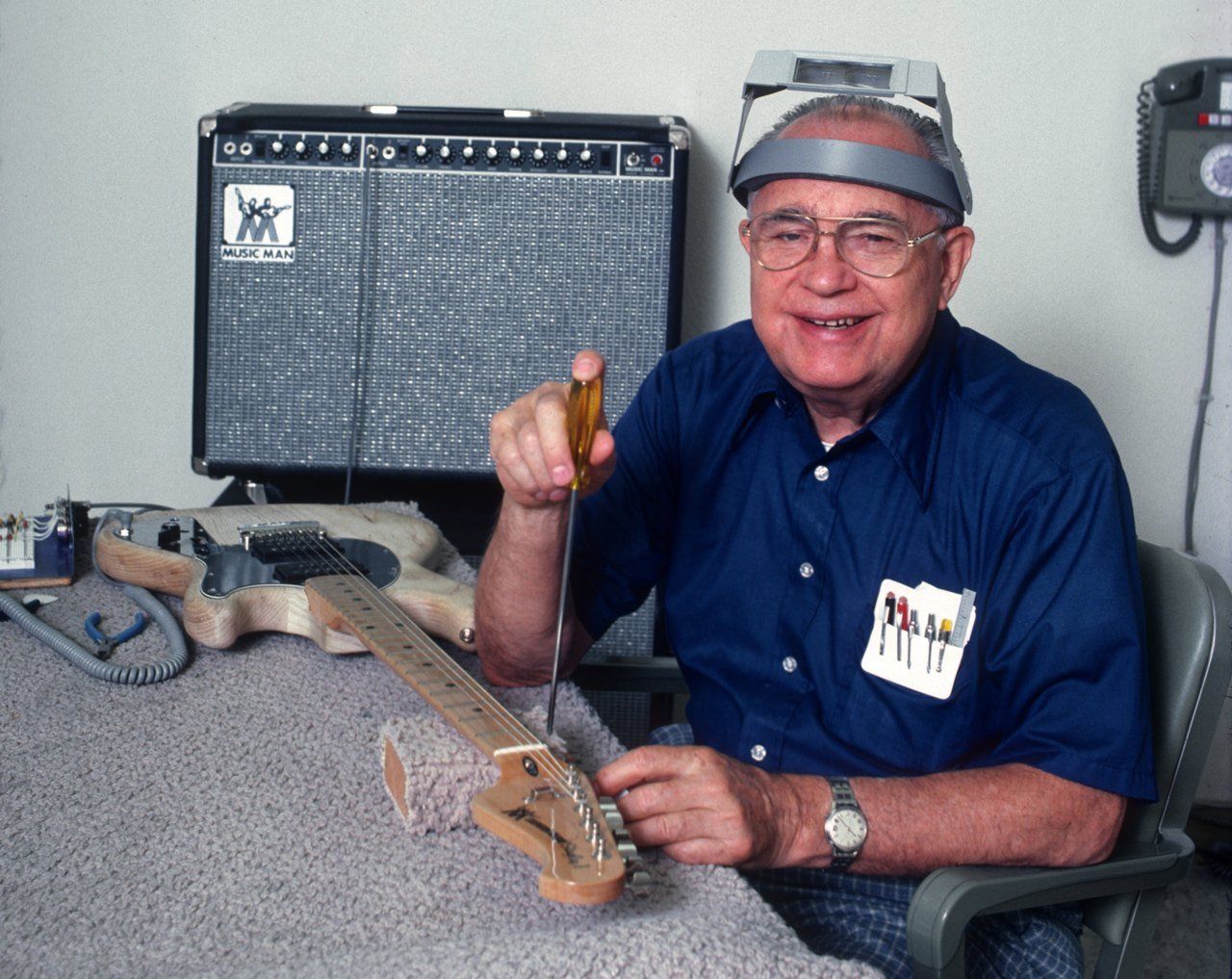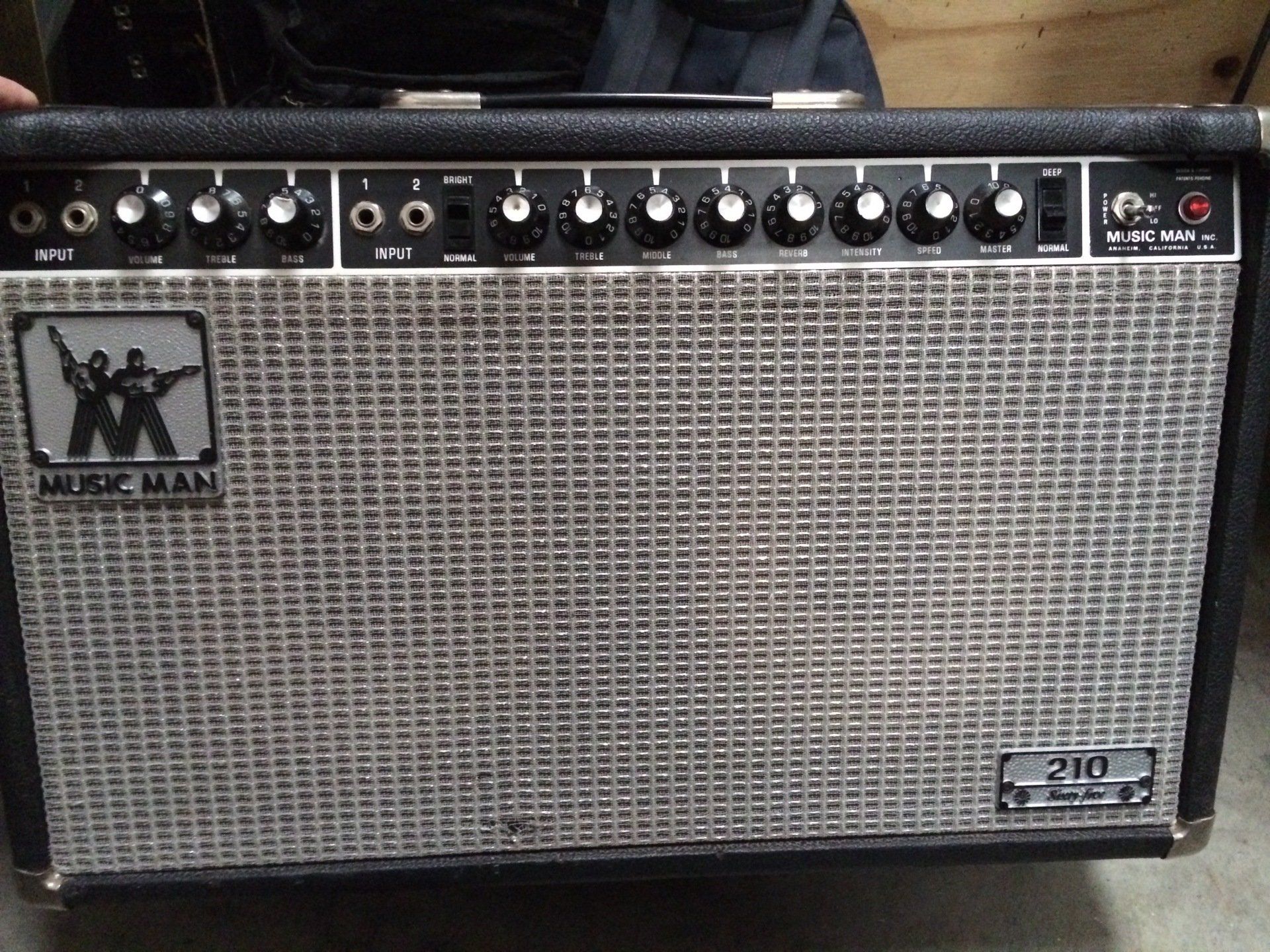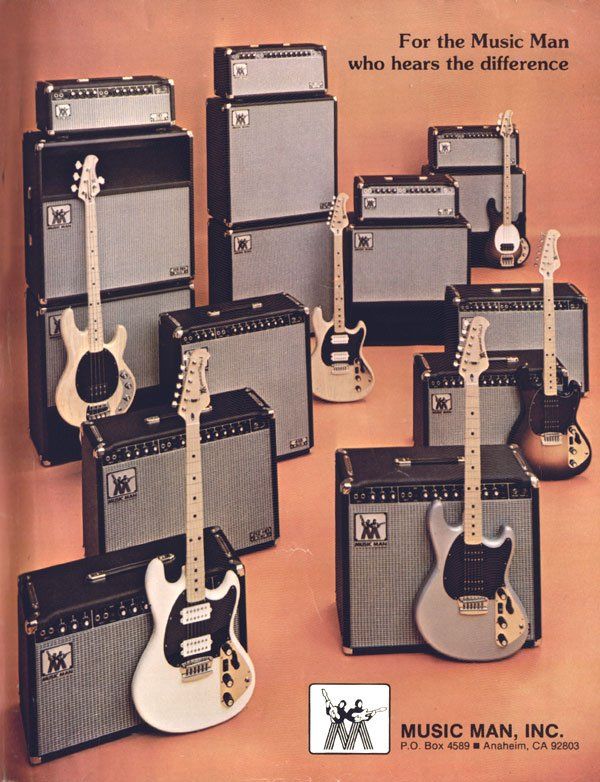When I'm Sixty-five...
... Leo Fender, he was the music man.

It could be argued that 65 was a significant number for Leo Fender; after all, it was in 1965, on the 5th of January, that he sold the Fender Electric Instrument Company Inc. to CBS for 13 million dollars (along with his associate Fender companies). Perhaps that’s why he chose the name 'Sixty-five' for his next series of amplifiers. But then in 1974, when the Music Man company produced that first line of 65 watt amps, Leo Fender also happened to be 65 years old. The output wattage might not have been the only reason for their
Sixty-five monicker.
The Music Man story started in 1971 when Forrest White and Tom Walker started a company called Tri-Sonix, Inc. Walker had been a sales rep at Fender and White had been with the company since 1954. By 1966 he'd had enough of CBS's changes and left, but during White's time at Fender, Leo had named a student range of amps and instruments after him and later made him Vice President. The Tri-Sonix firm became Musitek, Inc. in 1973 but Leo, who'd financed the initial partnership, decided that if he was going to get involved officially then a new name was in order and so early in 1974 the company adopted the alliterative name we now know so well. In 1975 the ten-year non-competition clause that CBS had put into their contract with Leo expired and he came out of the shadows to be officially voted president of Music Man by the board.
Leo Fender started making amps with Doc Kaufman back in 1945; by the time CBS bought Fender, Leo’s amps had taken 20 years to reach their zenith in the Blackface range that are still acclaimed today. It should come as no surprise that the first Music Man amps were the next evolution of that renowned marque. The Sixty-five series of amps were designed by Leo Fender and Tom Walker as a hybrid of the now world-famous valve amps Leo was known for with the new, rapidly developing, semiconductor technology. Solid-state devices were, by the early 1970s, far more complex than mere diodes and transitors. There were new, tiny operational amplifiers built into integrated circuits (which would become the basis of the next generation of 'fuzz boxes' in a whole raft of different overdrive & distortion pedals). The new range of Music Man guitar amps used op-amp IC chips in circuits that embodied typical Fender pre-amp architecture & time constants, to drive a push-pull, valve power amp. These early Music Man amps used metal-can ICs (rather than the more familiar Dual In-line Chips), which were socketed to allow for easy trouble shooting and maintenance.
Unlike most Fender amps, built on a 6L6 or similar tube power stage, the new amps used the 6CA7, or EL34 valves, more famously used by companies like Marshall and HiWatt. The clean tones were huge and bright with natural valve distortion when the power stage was pushed hard, an effect which could be replicated at lower volumes by the cunning dual mode selectable from the power switch. On the "Low" power setting the plate voltage was dropped by half but all four output valves were still in operation, giving a wonderful rich, harmonic overdrive at lower levels. This is a far more effective way of choking the power of an amp and retaining complex tone than the more common practice of achieving such attenuation by only employing half the power tubes*.
There was no mistaking the heritage of these new compact combos. Cosmetically they more than resembled the pre-CBS Fender models: two separate pre-amp channels, each with dual jack inputs, controlled by silver-capped black 'witch hat' knobs, on black face plates, above a silver grill cloth and all wrapped up in a black tolex covered pine cabinet. As befitting the next generation of Blackface amps the Sixty-fives had lush spring reverb and rich tremolo on channel two. However these Music Man tremolos can often confuse players used to Leo's older Fender circuits — you can't just dial in the numbers you'd usually aim for. That's because they had a double feature whereby the second half of the Intensity pot was wired to simulate a rotary speaker. Dial it up past 5 and the effect went from tremolo to Leslie. The Speed control also had a much wider sweep than it's Fender forebears**. This made for a much more versatile effect but required a lighter touch than the old Black- and Brownface circuits. The Sixty-five amps also had a "deep" rocker switch, for colouring the tone (much like the Blackface Bassman, but on the second channel) alongside the traditional Fender "bright" switch; and, again like the Blackface Bassman, they were solid state rectified.
And on top of everything else they were even made in Fullerton, CA. Imagine the excitement generated in 1974 by the rumour that Leo Fender was making amps again! The stable of Music Man amps soon expanded, getting larger, louder and more complex. They were rich, full and above all loud
— and the range of artists who adopted them was wide
— Nile Rodgers, Joe Strummer, Mark Knopfler & Eric Clapton, to name but a few. They were also built like the proverbial tank and their reliability on the road became legendary. Now 21st century players are starting to recognise just how great those early Music Man amps are and prices are steadily rising as a result.
Here at New Cut Studios we have a 210 Sixty-five made around 1977***. It has two fantastic horseshoe alnico 10” speakers made by Eminence (not by Jensen as some people claim). It’s one of the loudest, most brilliant combos we’ve ever heard — come down and try it out! The reverb and tremolo sound great, though a lot darker than those of our '77 Silverface Twin (yeah okay, those ultralinear MV Twins are crazy loud, but ours has been modded down to a more Blackface 85w). If you’re not after that huge clean sound it also takes overdrive and distortion pedals exceptionally well. And we have some great overdrive pedals at New Cut that you can use too — including an '80s Pearl OD-05, a Terry Audio White Rabbit, a Dr.No More Gary, a Fulltone OCD, Subdecay Liquid Sunshine — as well as some original '60s & '70s fuzz boxes. If you don’t want to use pedals for grit then put the 210 Sixty-five on the half power setting and it breaks up nicely earlier in the volume range.
Mind you, if you want to record some guitar with a lovely little, controllable amp that saturates beautifully at low volume into gorgeous harmonic distortion… we also have one of Leo’s Blackface Vibro~Champs as well. The valve generated tremolo of this tiny tone monster, when switched in, is phenomenal: deep and visceral. So if you’re after that perfect surf, rockabilly or psych-rock pulse there’s another reason to come and try out our Vibro~Champ too. And the year our Champ was made? Well, according to the valve chart in the back, it was '65.
* The Boogie MK.I is a classic example of this approach (though Mesa would experiment with different low-power switch circuits over the years), and the 2/4 output tube switch can still be found in use today in amps like the Orange TH30 which has Full and Half options on it's standby switch that takes two of it's EL84s out of the power amp stage.
** From the original 1974 Music Man catalogue:
"INTENSITY
The tremolo intensity control provides a double function. At settings from zero to five, modulation varies from zero to 100% respectively. At settings above five, a second modulation pulse is added giving a Doppler effect that simulates a rotating speaker.
SPEED
The speed control determines the rate at which tremolo occurs. It is an extremely wide range control and produces some unusual effects."
*** Going by the newest pot code I can find inside, though most of the pot codes are earlier, so it could be a repair. The banner picture for this blog was taken inside our 210
Sixty-five. Component dates are pretty much the only way you can date Music Man amps, I can't find a resource anywhere that decodes the serial numbers.



